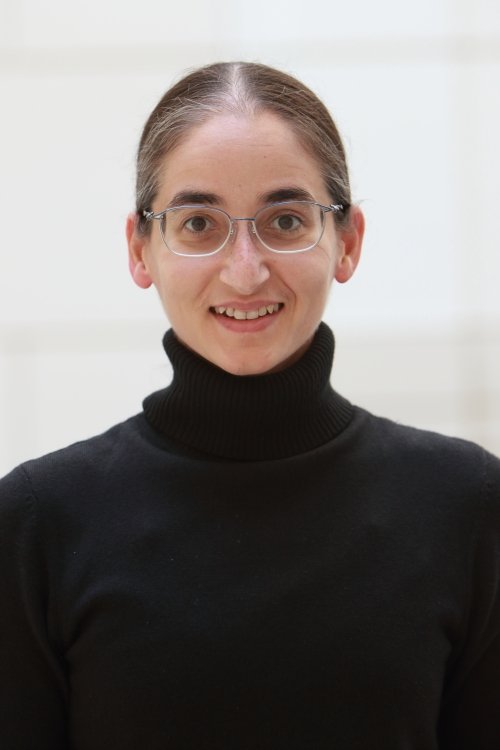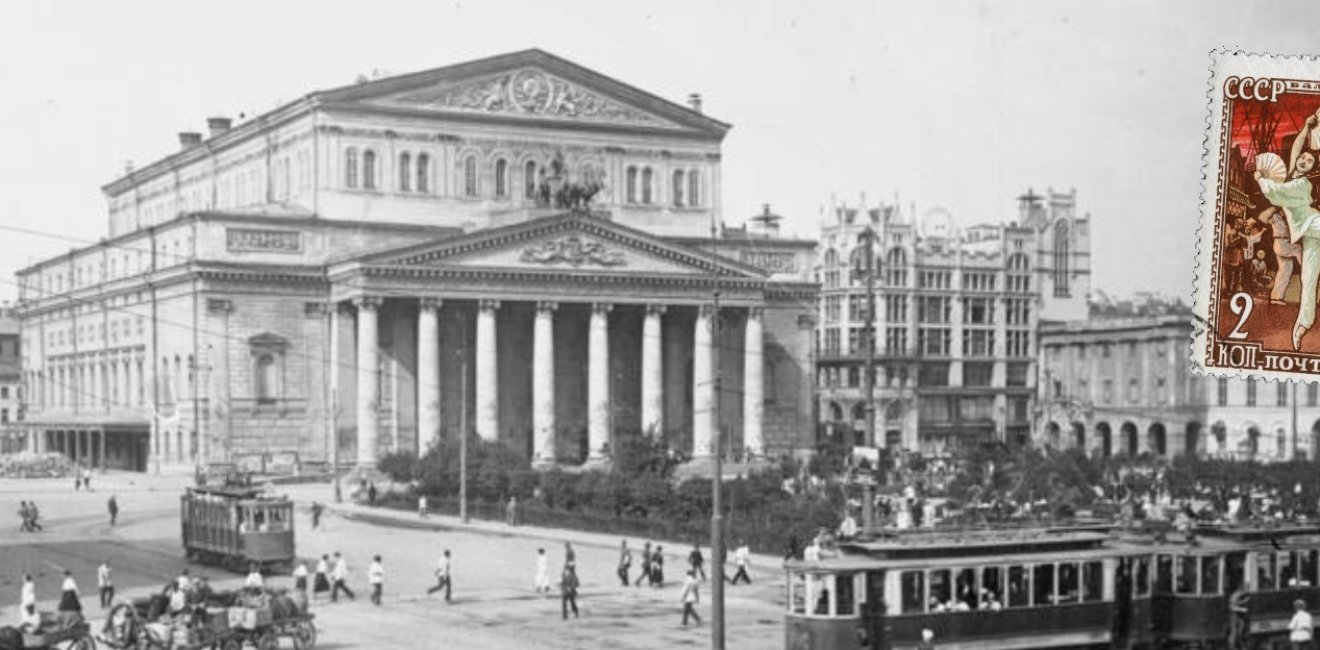
Q: Describe your background and what brought you to the Wilson Center.
My undergraduate studies and initial doctoral training were in Dance. I recently completed my PhD in Modern Russian History at the University of California, Riverside. My doctoral dissertation takes The Red Poppy, which became famous as "the first Soviet ballet," as a case study. I analyze change over time in three productions of this ballet at the State Academic Bolshoi Theater of the Soviet Union. By attending to multiple versions of the same ballet, I document change over time in the stories Soviet ballet told and how Soviet ballet told its stories. I spent fourteen months in Moscow conducting archival research, taking ballet classes, and attending performances as I was preparing to write my dissertation. I have come to the Wilson Center to access the Library of Congress's collection of Soviet journals and newspapers that covered ballet from the late 1910s through the 1950s. I plan to incorporate this press coverage as I revise my dissertation into a book manuscript.
Q: What project are you working on at the Center?
I am conducting research for my first book project, which is based on my dissertation and tentatively titled Ballet for Socialism's Sake: The Red Poppy at the Bolshoi Theater, 1927-1960. A lot of people in the United States think of ballet as an elite art form, something that is exclusive both in terms of the people who can become dancers and in terms of the people who can experience and enjoy performances. However, in the Soviet context, distinctions between so-called high art and popular culture were much less clear. The Soviet government nationalized the prerevolutionary Imperial Theaters of Opera and Ballet in St. Petersburg and Moscow and opened them to working-class audiences. In the period that I study, Soviet artists and officials transformed ballet—an art form intimately associated with the Russian imperial family and European courts of centuries past—into a form of socialist popular culture. My book explores change over time in the institutions and practices surrounding ballet as well as changes in the art itself that contributed to Soviet ballet's astounding popularity and to the ongoing popularity of ballet in Russia and much of the former Soviet Union today.
Soviet leaders and artists envisioned ballet as an instrument for building the first socialist society; to this end, the Soviet government invested in ballet as a means to politically educate and enlighten mass audiences. But they didn't just hand out free tickets or order people to go to the theater. They developed a dense network of practices and institutions to make ballet accessible, including but not limited to the provision of free or discounted tickets at box office locations convenient to workers; explanations of theatergoing etiquette, production processes, and the plots of the ballets; showings of works-in-progress where workers were invited to give suggestions for improvement; off-site performances at workers' clubs and factories, at the fronts during wartime, and at stadiums; screenings of ballets in cinemas and later on television; and regular provision of special events and performances for children and students. In other words, Soviet ballet was accessible because mass audiences had a variety of opportunities to learn about and experience ballet.
But Soviet ballet was also accessible in the sense that mass audiences could understand the ballets they experienced and identify with the characters on stage. I argue that early generations of Soviet artists shared the government's goal of using ballet to enlighten mass audiences and that ballet's pedagogical mandate spurred artists to create ballets on contemporary political themes such as women's equality and colonial oppression. The pedagogical imperative and these new themes for ballet required choreographers and dancers to communicate increasingly complex and dramaturgically rigorous stories. In order to communicate these new kinds of stories, choreographers and dancers developed embodied storytelling techniques. They shifted away from nineteenth-century ballet mime gestures, which had been ballet's primary means of moving a story along, and toward telling stories through dance.
One common stereotype about Soviet artists, especially in the 1930s and 1940s, is that artists were somehow resisting the influence of socialism on this precious art form. A key takeaway from my book is that a lot of artists were not actively resisting the Soviet cultural project in this period. Dancers and choreographers sought to make ballet more accessible and more enjoyable for mass audiences; they actually supported the Soviet cultural project. In fact, I argue that the pedagogical imperative for Soviet arts stimulated their creativity. Combining serious subject matter, well-developed characters, strong plotlines, and storytelling through dance, I contend that early Soviet ballets such as The Red Poppy constituted decisive steps toward productions of even greater psychological complexity: the through-danced ballets of the Thaw era and beyond. Soviet ballet innovations transcended the borders of the Soviet Union during the Cold War and have even outlasted the Soviet Union. However, Soviet ballet did not become world-renowned because of artists' resistance to the Soviet cultural project but because of the Soviet artists' commitment to their mission of politically educating and enlightening mass audiences through danced storytelling. My research recuperates the labor and creativity of two generations of Soviet artists who reinvigorated ballet as a vibrant modern performing art, albeit in very different form from the Ballets Russes and twentieth-century ballet in Western Europe and the United States.
Q: How did you become interested in your current research topic?
It's been a long journey. I have collected strands of this project over the course of more than thirty-five years, and with the book, I am braiding the strands together.
First, I fell in love with ballet. When I was two years old, one of the first things my mother showed me on television was an episode of Great Performances: San Francisco Ballet in Cinderella. I loved the combination of movement, music, and story. The dancers didn't say a word, and yet they told a story. I thought it was magic!
Then, I fell in love with Russian ballet. At Mount Holyoke College, I studied ballet technique with Rose Marie and Charles Flachs. They introduced me to what is known as the Vaganova syllabus. This content and approach to teaching ballet is named for one of the Soviet Union's most prominent ballet teachers, Agrippina Vaganova. Vaganova was very systematic about structuring ballet lessons and curricula, and Rose and Charles approach teaching and learning ballet very methodically. Within the first week of classes at Mount Holyoke, I realized that ballet wasn't all magic. It could be learned. By following their system, I learned to coordinate my muscles and limbs and to think critically about my dancing. (Maybe it would be more precise to say that this was a different kind of magic!) As I made technical progress, I felt empowered and quite in awe of Vaganova and the generations of ballet teachers and students who had dedicated their lives to perfecting this art form in Russia.
Eventually, I settled on a dissertation topic about Soviet Russian ballet. With support from a Jacob K. Javits Fellowship, I had the opportunity to study Russian language and then travel to Moscow for archival research. I decided to research ballet in the early Soviet period because it seemed like the period about which readers of English-language books had the least opportunity to learn. There were a number of books about the prerevolutionary Imperial Russian Ballet, and by the 1970s and 1980s, there were quite a few Soviet ballet productions that were filmed and widely distributed. But what happened in Soviet Russia in between, especially before the first Soviet ballet companies toured to Western Europe and North America in the latter half of the 1950s, was a mystery. I figured that, if I could not read about this time and place in ballet history in other people's books, perhaps I could write one of my own.
I also recognized that evening-length Soviet story ballets with huge casts, original music, and elaborate sets and costumes were made possible not only by individual genius artists but by institutions, including in the Soviet context state-sponsored theaters and government organizations that oversaw theatrical production. Luckily, my dissertation adviser Kiril Tomoff is an expert on Soviet musical and cultural institutions, and he advised me on how to balance my interest in how ballet changed over time with investigation of the institutions that provided many of the resources with (and constraints within) which Soviet artists worked.
As a result, my research attends to the everyday operations of the Bolshoi Theater, collaborative ballet production processes, and change over time in the kinds of stories ballet told and Soviet ballet's methods of embodied storytelling. As it happens, two of Agrippina Vaganova's most famous students, Marina Semenova and Galina Ulanova, were leading dancers at the Bolshoi Theater in the period that I study, and it was in this period that Sergei Prokof'ev composed the music for Cinderella and choreographer Rostislav Zakharov first staged the ballet at the Bolshoi Theater. I became interested in ballet, then Russian ballet, then Soviet Russian ballet, then the institutions that provided the conditions of possibility for Soviet ballet to flourish. And that is how I arrived at my current research topic.
Q: Why do you believe that your research matters to a wider audience?
I think my research matters because it helps us recognize diversity in human experiences. Even among modern societies, the functions and roles of the arts are not the same. The Soviet Union was a modern society structured by the rejection of market capitalism. And in that society, the arts—including ballet—took center stage in people's lives. The arts were more than entertainment, more than outlets for personal expression. Understanding and appreciating ballet and other forms of cultural production were part of being a good Soviet citizen; the same is not true of all modern societies. Attending to these differences can shed light on how different societies brought and bring people together. It can also help us appreciate the ways in which people in different places and times have found and continue to find meaning in their lives.
Q: What is the most challenging aspect of your research?
The logistical challenges of international archival research are innumerable. From securing funding, time, and an appropriate visa to coordinating orders at multiple repositories (which all have different schedules and policies) to piecing together a coherent narrative out of materials collected from here and there...
But at the moment, the most challenging aspect is framing my interdisciplinary research for audiences in a variety of disciplines. As a dance scholar, I am really interested in how Soviet choreographers and dancers moved away from telling stories with mime gestures and toward telling stories through dance. But a lot of historians don't necessarily care about how the art of ballet changed. Historians may be more interested in how an elite art form like the ballet of the former Imperial Theaters of Opera and Ballet came to be beloved by mass audiences and the questions that this example raises about our traditional categories of high vs. low art. Social historians, in particular, as well as scholars of theater and music may be interested in my research about the Bolshoi Theater's day-to-day operations and its relationships with various oversight bodies. Sociologists may be interested in my analysis of collaborative ballet production processes and how the Bolshoi Ballet's collective creativity undermines the myth of the individual (male) genius as artistic creator. Balletomanes may be interested to find out that dancers—including women—participated in these collaborative production processes; even if there was a single name listed as choreographer, that choreographer was getting a good deal of feedback behind the scenes, especially from dancers. And scholars of Russian literature and culture may be interested in the role of narrative in ballet and the fact that the era of socialist realism proved generative for this particular genre. I think that my research has the potential to contribute to scholarly conversations in several disciplines, but figuring out which pieces will appeal to whom is a challenge.
Q: What do you hope the impact of your research will be?
On the policy front, I hope that my research will help raise American policymakers' awareness about dance (and cultural life more generally) and its vital role in cultures around the world, especially in Russia and the rest of the former Soviet Union. I hope that policymakers will think about their own assumptions with regard to dance and recognize when their assumptions based on their experiences in the United States are at odds with their experiences abroad. This gets back to the diversity of human experiences, past and present, and it will help policymakers develop deeper understandings of other societies than an exclusive focus on high politics can provide.
With respect to scholarly debates, I hope that I can highlight examples of dance that are interesting, even when the artists involved were not actively resisting their society's hegemonic structures. I would like to help dismantle the scholarly assumption that dance and culture are primarily interesting as sites of political resistance. I believe that dance and other forms of cultural production are valuable lenses through which to study societies past and present, period.
The opinions expressed in this article are those solely of the authors and do not reflect the views of the Kennan Institute.
Author


Kennan Institute
After more than 50 years as a vital part of the Wilson Center legacy, the Kennan Institute has become an independent think tank. You can find the current website for the Kennan Institute at kennaninstitute.org. Please look for future announcements about partnership activities between the Wilson Center and the Kennan Institute at Wilson Center Press Room. The Kennan Institute is the premier US center for advanced research on Eurasia and the oldest and largest regional program at the Woodrow Wilson International Center for Scholars. The Kennan Institute is committed to improving American understanding of Russia, Ukraine, Central Asia, the South Caucasus, and the surrounding region through research and exchange. Read more

Explore More
Browse Insights & Analysis
Kennan Institute Scholar Spotlights

Talking to the Dead to Heal the Living


